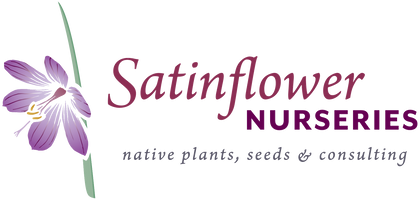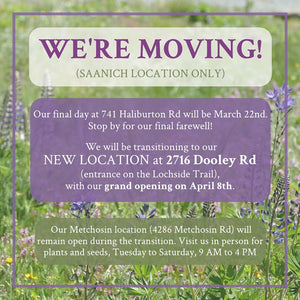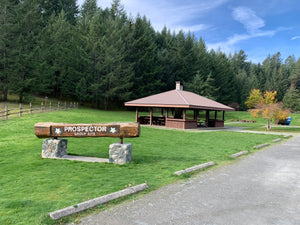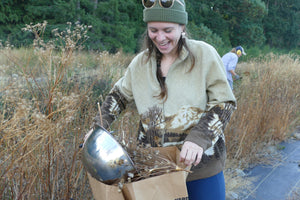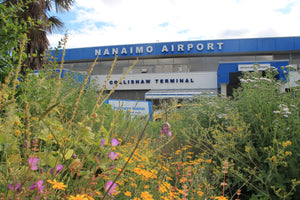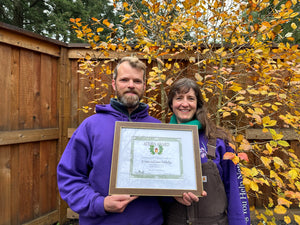Weekly with Daly: Hedgerows

The Weekly with Daly is a regular column about the musings of the nursery written by our in-house wildlife observer and passionate conservationist, Julia Daly.
In Spring 2019, my daughters and I volunteered at a native hedgerow planting event at Sea Bluff Farm in Metchosin as part of Habitat Acquisition Trust’s “Hedgerows for Habitat on Farms” initiative in collaboration with Satinflower Nurseries. Since this experience, I have become even more appreciative of the habitat value hedgerows generate.

Hedgerows are dense thickets of small trees and shrubs bordering roadsides, meadows or agricultural areas. They form living fences that provide many ecosystem services like wind protection, drainage control, erosion prevention, noise buffering, shade, visual screening and natural pest management through beneficial insects. Hedgerows may form naturally along pathways and ditches or be planted to delineate property lines, stabilize banks, increase crop pollination or beautify yard spaces.
Planting a hedgerow is one of the easiest and most effective ways to support wildlife and increase biodiversity in many open landscapes. They create travel corridors for wildlife; abundant floral resources for pollinating insects; shelter, nesting sites and forage for birds; and moist, shady microclimates for frogs, toads and salamanders. Hedgerows can suit many environmental conditions, from shady wet ditches to dry coastal bluffs. Wildflower and bunchgrass strips can be planted directly in front of hedgerows to add extra structural and ecological diversity to plantings.
Hedgerows bring beauty and life to open sites with colours and textures that change every season. Want to learn more about hedgerow site preparation, species selection and planting tips? You can find more info here.

Common Yellowthroat (Geothlypis trichas) foraging for insects amongst hardhack (Spiraea douglasii). Photo by Glenn Bartley.

Left: Even in winter, hedgerows yield beautiful colour and texture. This wetland edge planting includes Hardhack (Spiraea douglasii), Red-osier dogwood (Cornus sericea) and Pacific Willow (Salix lasiandra). Right: A bird nest from the previous season reveals itself in winter.
Hedgerow Design & Maintenance tips:
- Select plants suitable for your site’s light and soil moisture conditions and include a variety of plant species that flower and fruit from early spring to late fall.
- Promote habitat connectivity by linking hedgerows to existing trees, water sources or wooded areas.
- Include some known butterfly host plants.
- Include dead wood, rock piles and bare soil patches in the understory of hedgerows as nesting sites for wood- and ground-nesting bees. Garter snakes also favour these habitat features.
- Include shrubs and plants with hollow or pithy stems for carpenter bee (Ceratina) nesting sites.
- Avoid unnecessary pruning that could disturb nesting birds and insect larvae or raking of leaf litter that could disturb salamanders and soil invertebrates.
- Use leaf mulch to keep non-native and weedy vegetation in check.
- Involve your friends and neighbours in planting a hedgerow and enjoy watching it grow, evolve and attract wildlife.
- Tags: birds botany butterfly Weekly with Daly
- Satinflower Nurseries
